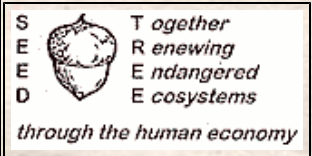Research
We Have the Power to Impact Our Future, and We’re Doing Something About It
2019
Cordyceps, Mountains, Market, and People: Understanding Challenges in Conservation and Sustainable Trade of Cordyceps in Nepal
Harvesting of Cordyceps (Ophiocordyceps sinensis) by the Himalayan communities is widespread across the Himalayan region, including Nepal. Cordyceps is traded in large volumes in domestic as well as international markets, supplementing household income, as well as being a source of sustainable livelihoods (Upadhaya, 2018; Yadav et al., 2011). But due to the recent surge in demands, its price in the international market has surpassed all other natural medicinal products (Shrestha and Bawa, 2013), and due to the high price harvesters and traders received the high return…
2019
Sustaining Ophiocordyceps sinensis and Community’s Livelihoods: Understanding the Economic & Ecological Impacts of Cordyceps Harvesting in High Mountain, Nepal
The caterpillar mushroom (Ophiocordyceps sinensis) is an endemic species of high-altitude ecosystems. It is one of the world’s highest paid medicinal herbs which plays a significant role in the local and national economy. Annually, thousands of people from different parts of Nepal travel to high altitude areas of Dolpa for mushrooms harvesting which has resulted in threats to it, which ended with the decline of its production over the years. The lure of easy money has resulted in the unsustainable harvesting of the species which has led to a sharp decline in its production and also the movement of people…
2016
Developing Sustainable Human-Elephant Coexistence Strategies for the Endangered Asian Elephant (Elephas maximus) in Eastern Nepal
Elephants are a pervasive threat to Nepal, causing more than 40% of human-wildlife conflicts and resulting in 70% of human casualties (Bajimaya, 2016). The Asian Elephant (Elephas maximus), listed as “endangered” by the IUCN’s CITIES Appendix I, is losing its population dramatically over the last century and the major cause of this decline is believed to be the loss and fragmentation of its suitable habitat. Communities in Eastern Nepal have greatly impacted the habitat of Asian elephants through farming and settlements, a combination that results in high conflict between these two (Poudyal, 2013). Nepal’s Elephant Conservation Action Plan (2009-2018) has clearly stated human-elephant conflict minimization as one of its objectives, but in practice, activities are concentrated in buffer zones and protected areas. This does little to mitigate human-elephant conflict in regions far from protected areas, such as the Jhapa District of eastern Nepal – an area of significant human-elephant conflict…
2016
Snow Leopard (Panthera uncia)
The number of snow leopards is declining because of habitat degradation and fragmentation, reduction in natural prey due to illegal hunting as well as competition with livestock, the retaliatory killing of snow leopards, lack of awareness, and lack of transboundary efforts. Youth for Nature (YFN) local NGO from Dolpa is working for the conservation of these endangered species through the funding of MBZ. The objectives of this project are to actively engage upland communities as stewards for the snow leopard, its prey, and habitat, provide veterinary training to local livestock herders and create conservation awareness on local people…
Partners & Sponsors







